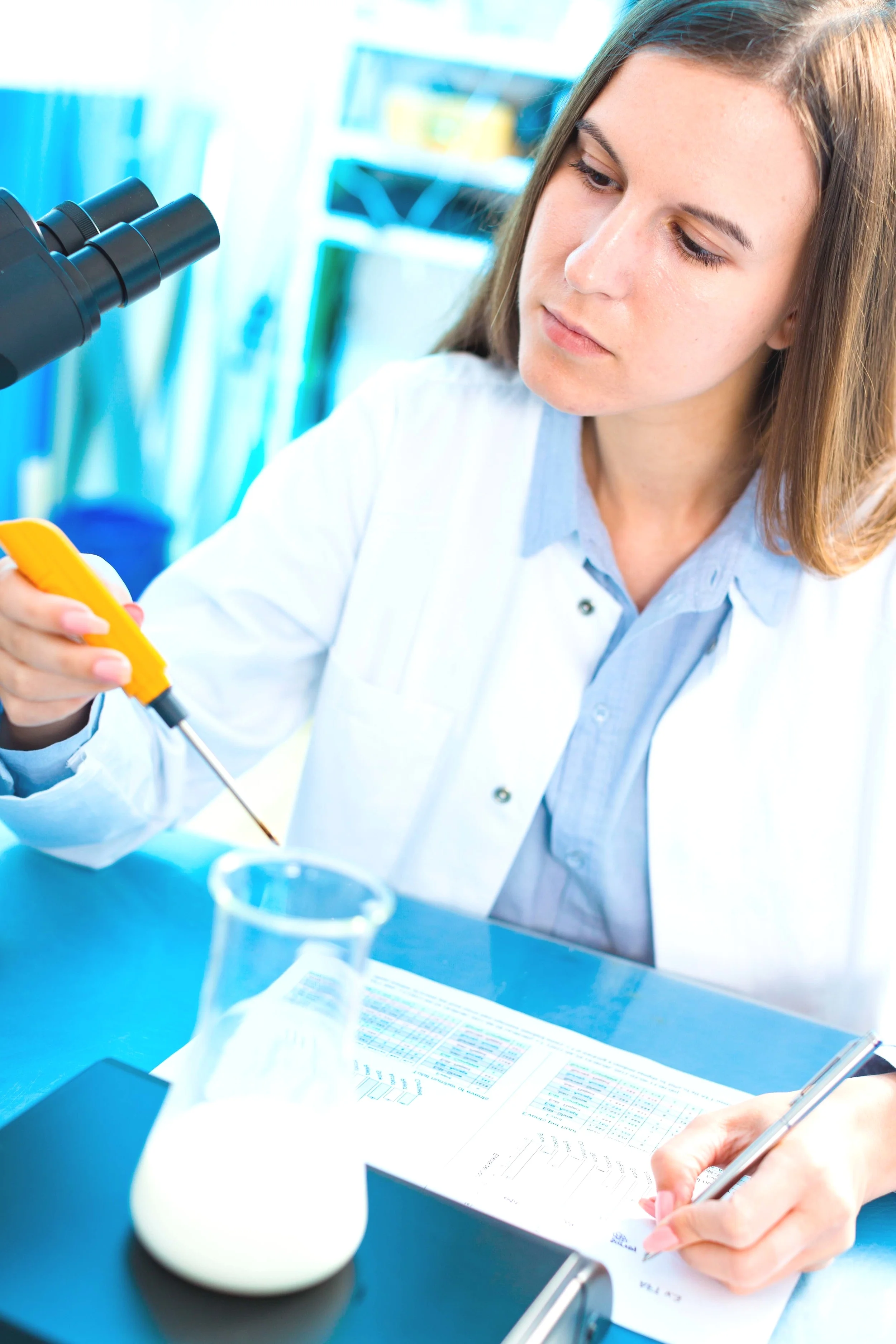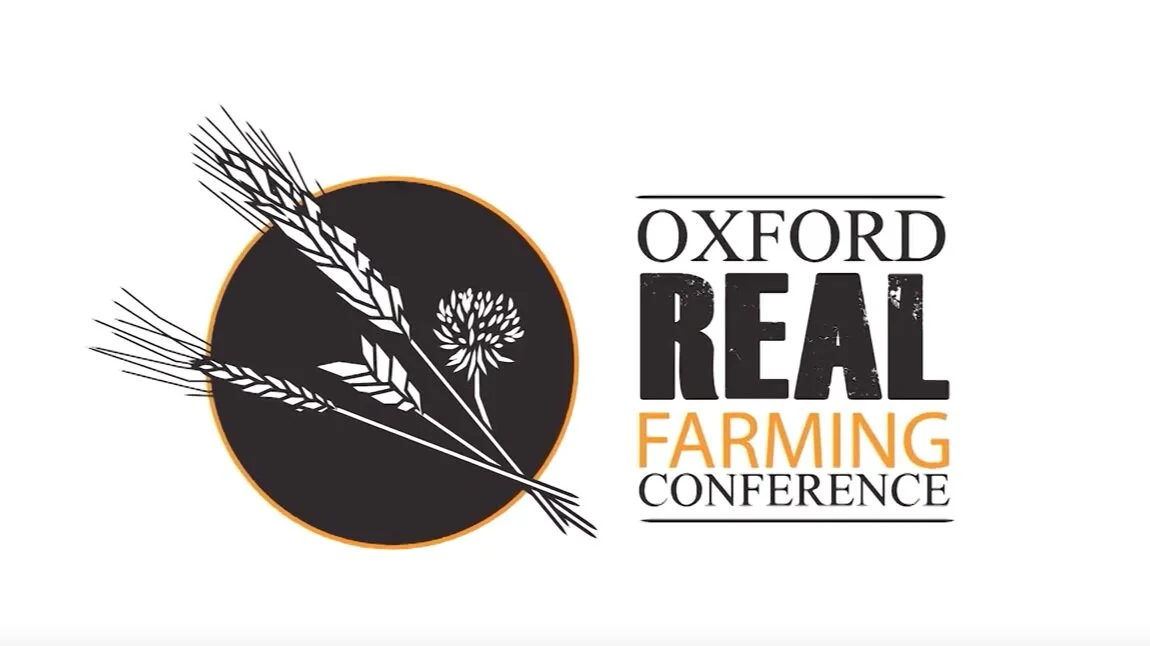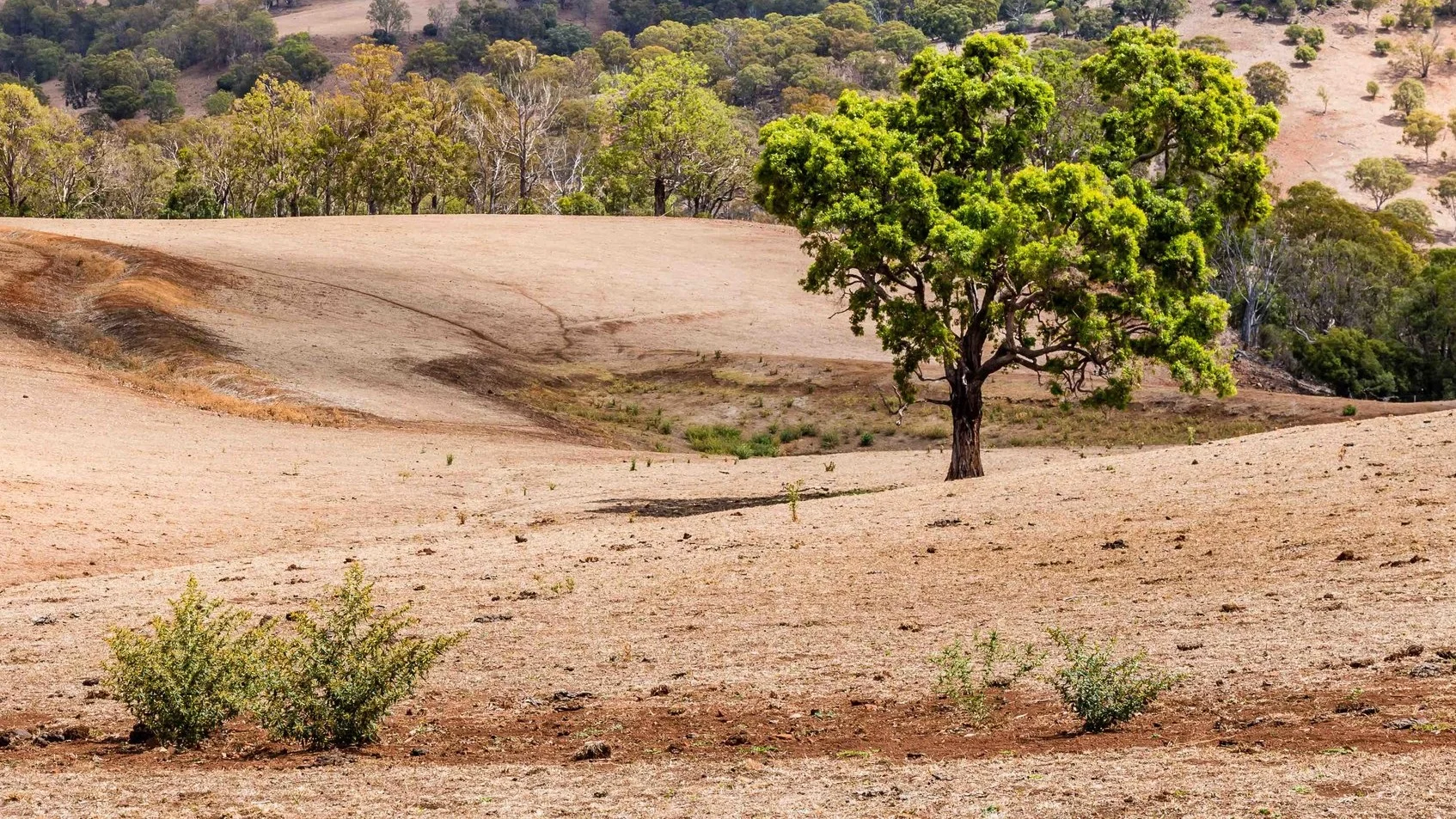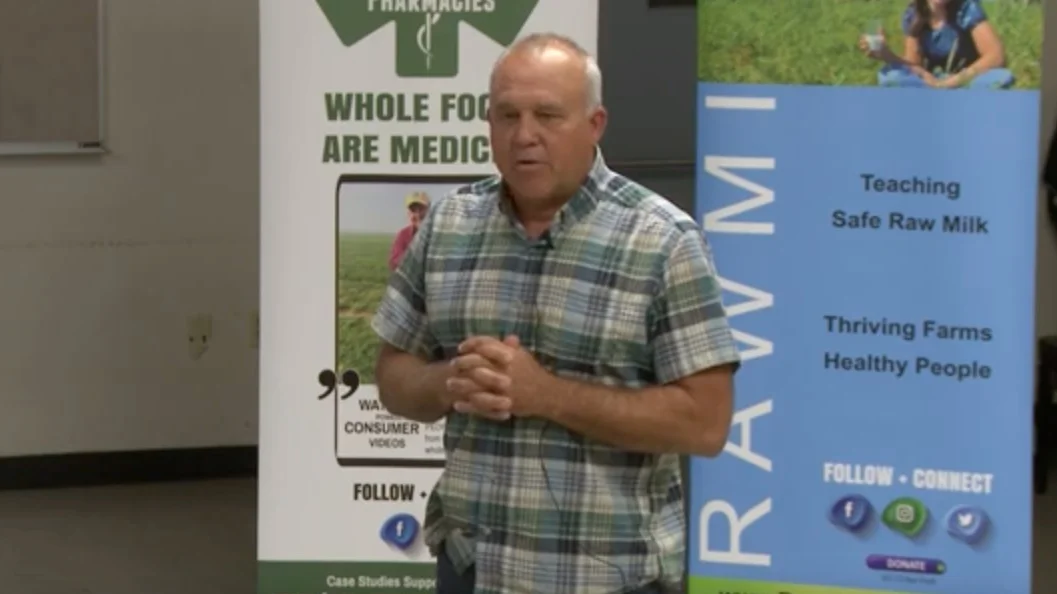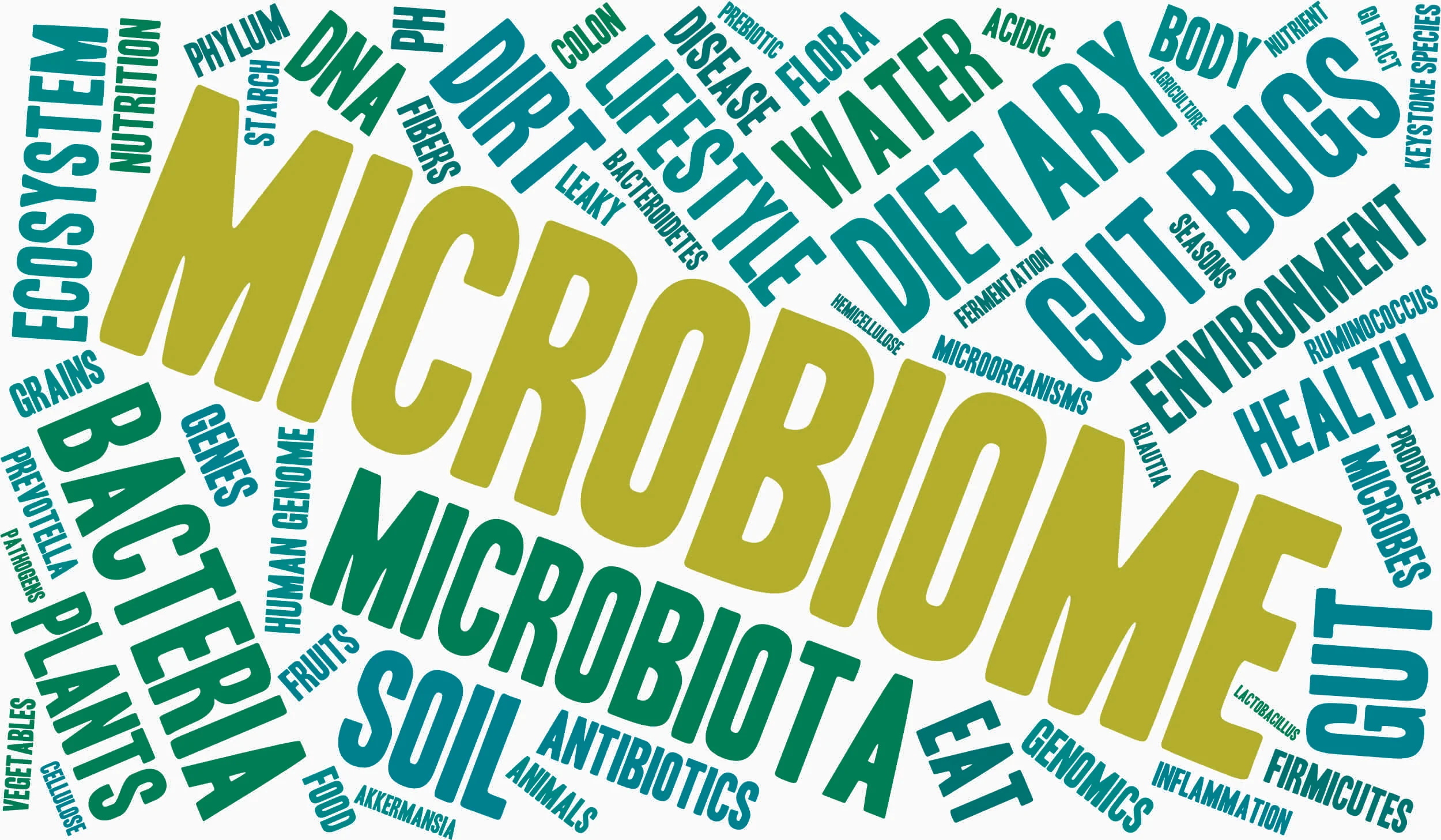A brilliant Civil Eats article recently asked: Has Our Food Become Safer in the Last 10 Years?
The question of just how safe our food is, and what can be done to make it safer, has been occupying scientists, advocates, lawmakers, and public health officials for decades. We are now in a unique time in history where old systems are buckling under the weight of lack of structural integrity. These challenges are making a stronger case for the change in food production systems that will benefit everyone.
Even though food safety is designed and intended to save lives and protect vulnerable people, it is also important to be aware that food safety regulations can bring unnecessary and unfair financial and operational burdens, or unnecessary inspections for some farmers. Farmers shouldn’t be worn out like this when there are viable alternatives for food safety, like those explored in this article. There are different kinds of farming operations with different microbial risk profiles. Some are sustainable, and others are not, and it is essential not to be in ignorance of this fact. Profit is a big motivator in food production, and so food safety can become secondary.
Research show Australia continues to have significant increases in the number and severity of illness outbreaks due to food-borne illness. Evidence show Australia has higher rates compared to similar countries. Many common foods have a food-borne illness risk, like leafy green vegetables, berries, rockmelons, eggs, etc.
Pathogens have been with us for millennia, but Australians are losing their natural immunity to pathogens at a fast rate. It’s important to remember that the risk reduction strategies in food production are mitigation strategies, they are not necessarily prevention strategies. No food can be produced 100% safe. Many foods are allowed to have a manageable risk, despite the fact that we have some very immune-compromised people in our society who can suffer food poisoning easily. Some people are learning to change the way they look at this complex situation. The food safety professionals at FSANZ may benefit from a fresh perspective as well, especially since they expressly asked for it…
Food Standards Australia New Zealand Food Safety Consultation
“Have you say on Australia’s food safety management standards.”
“In addition, FSANZ will consider new technologies that have developed since the original standards were developed.”
“I encourage all stakeholders to comment on the proposed scope and approach of the review by 31 May 2019.”
“We are expecting to prepare a number of proposals to progress this work and there will be consultation opportunities during the proposal process."
Food Safety Australia New Zealand released an information paper on its proposed approach to a review of food safety standards in the Food Standards Code on the 3rd of May. FSANZ CEO Mark Booth said FSANZ is reviewing chapters 3 and 4 of the Food Standards Code to ensure there is a consistent and up-to-date approach to food safety management in Australia. According to FSANZ’s website, the review will focus on:
the requirements for food safety management in the food service sector and closely related retail sectors, and
potential development of a primary production and processing standard for high-risk horticulture products to introduce requirements to manage food safety on-farm, including requirements for traceability.
Australia’s Foodborne Illness Risk Reduction Strategy 2018 - 2021+
The aim of Australia’s Foodborne Illness Reduction Strategy 2018-2021+ is to reduce the number of food-related human cases of campylobacteriosis and salmonellosis in Australia by 2021. This document contains a strategy particularly related to Campylobacter and Salmonella. In 2017, the Australia and New Zealand Ministerial Forum on Food Regulation (the Ministerial Forum) aimed to create a national effort, collaboration with partnerships across the entire food supply chain.
Image: a snapshot from the document (source)
Campylobacter
Campylobacter is the most commonly notified cause of gastroenteritis in Australia. The report Foodborne illness in Australia – annual incident circa 2010 estimated the median number of domestically acquired cases of gastroenteritis due to Campylobacter (circa 2010) to be 234,000 cases, including 3,200 hospitalisations and 3 deaths (77% of these cases were considered to be via foodborne transmission). Compared to similar countries, both Australia and New Zealand have higher rates (see Figure 1).
Salmonella
In Australia, food-borne illness caused by Salmonella has significantly increased over the past 20 years and, compared to many similar countries, we have one of the highest rates (see Figure 2). There are an estimated 56,200 cases of salmonellosis (2,100 hospitalisations and 15 deaths) with 72% of these considered to be food-borne.
What is the problems FSANZ are trying to solve?
According to the information paper, Australia still continues to have problems with foodborne illness. In April 2017, the Australia and New Zealand Ministerial Forum on Food Regulation (the Forum) agreed the food regulation system is producing strong food safety outcomes overall, but identified three priority areas for 2017–2021 to further strengthen the system. What is of particular interest, is that he Forum asked FSANZ to: reassess regulatory and non-regulatory measures to address food safety in high-risk horticulture products (ready-to-eat, minimally processed fruits and vegetables; fresh leafy green vegetables; melons; berries; and sprouts). Since 2014, there have been several food incidents involving fresh produce in Australia:
Hepatitis A in frozen berries (2015)
Salmonella in pre-packed lettuce (2016)
Salmonella in mung bean sprouts (2016)
Salmonella in rockmelons (2016)
Hepatitis A in frozen berries (2017)
Listeria monocytogenesin rockmelons (2018)
Hepatitis A in pomegranate arils (2018)
These foods are identified as high-risk horticulture products in the documentation. The impact of these incidents can be significant. For example, the 2018 outbreak of Listeria associated with rockmelons resulted in 22 cases (including at least 7 deaths). The outbreak temporarily closed an export market and impacted the domestic market with losses to growers estimated to be $15 million. According to the document, about 70-80% of horticultural produce for sale in Australia is produced under a food safety scheme that contained measures to control identified risk factors. A “one size fits all” regulatory approach was considered problematic to develop and deliver, given the diverse and unknown nature of some parts of the sector. But there may be good food safety solutions not previously considered after all…
Solutions: Consider Competitive Exclusion, Colonisation Resistance, Soil Microbes and Elimination of Antimicrobial Use
New understandings have been reached since the original standards were developed, and it is important that they be brought to FSANZ’s attention. FSANZ may already be aware of them, but a few key things are worth pointing out.
There is a simple solution that may be effective for many areas: it’s called flooding the terrain with beneficial microbes.
Potentially harmful microbes are almost everywhere and we cannot get rid of them by the usual means, especially where food is involved. In some cases, bacteria respond to an attempt on their lives - like pasteurisation or other sterilisation methods - by becoming resistant, or in worst case scenario they can turn into antibiotic-resistant superbugs. Irradiation, or other forms of sterilisation of fruit and vegetables are also not ideal, because it leaves the terrain of the fruit/vegetable skin vulnerable to colonisation of bad bugs, who are quicker to colonise after a sterilisation effort, than good bugs. However, significantly increasing the presence of diverse species beneficial microbes have shown to be highly beneficial and protective in various terrains.
Competitive exclusion in ecology follows the simple idea that two species that compete for the exact same resources cannot stably coexist. Colonisation resistance in simple terms is when beneficial microbes colonise a terrain in high numbers. When beneficial microbes reach a certain percentage, like for example 60%, they can form a quorum, and can outcompete and even disable the potentially harmful functions of pathogens present. In this article Microbiologist and risk assessor Peg Coleman explains the the power of beneficial microbes in the gut lining: they colonise and prevent pathogens from doing the same or causing harm. She describes how the microbiota of healthy people can effectively inhibit colonisation and overgrowth by invading pathogens. They are our gatekeepers to health.
Many farming systems don’t have a high percentage of beneficial microbes anymore, due to unhealthy farming practices. In society, many consumers don’t have access to a source of diverse species beneficial microbes in the diet either. Research show many commercial probiotics are inferior probiotics. The terrain on the farm, and in the human gut, is a battleground where beneficial microbes and potentially harmful microbes compete for resources, and only one kind can be the dominant species.
Image: Two extremes: cattle in a feedlot or cattle on regenerating pasture? This is an example of two different terrains with two different microbial risk profiles. Click to enlarge.
Since Australia won’t allow consumers to enjoy regulated raw drinking milk from cows, many consumers cannot enjoy the traditional good gut health of generations gone by. When the normally diverse protective microbiota is disturbed by antibiotics, drugs, or stresses in various environments, susceptibility to pathogens greatly increases. Peg says that "immunocompromised patients are at a higher risk than the average population due to abnormal or depleted microbiota, loss of colonisation resistance, and higher susceptibility to low pathogen loads or doses often present in hospital environments." These are some of the many reasons why the elderly, and other immune compromised groups of society, have become so vulnerable to eating everyday foods like leafy green vegetables and rockmelon. When one pathogen is introduced from handling or ingesting a food, the gut lining sometimes cannot offer ‘colonisation resistance’, and the harmful microbes can gain an advantage. Up to 80% of human immunity lies in the gut.
It is also worth mentioning that Campylobacter was not considered a human pathogen in North America until 1972. According to Mark McAfee from the Raw Milk Institute, it was considered normal to have Campylobacter immunity once you've had it. He said it is essential to have a bio-diversity in our microbiome, because if not, it is like having the welcome mat out for pathogens. The real health crisis with Campylobacter started when people lost their gut bio-diversity and as a result, their immunity. Over prescription of antibiotics killed off the healthy, diverse microbiome of many, and enabled the bad to take advantage. Not having access to good microbes have also increased allergies and other health conditions: Melbourne is considered food allergies capital of the world.
Solutions: Regenerative Agriculture done the Right Way results in Healthy Soil & more Beneficial Microbes in the terrain
Feeding livestock high amounts of grain also creates complex health problems that result in rumen acidosis, and a better environment for E.coli 0157 and other Shiga toxin-producing E.coli. High grain feeding and crowded CAFO operations can also pass harmful microbes to manure and fertiliser, resulting in environmental hygiene problems and high numbers of pathogens in terrains. If we can return our ruminant animals to a pasture-based diet, microbial challenges will be minimised.
Regenerative agriculture creates healthy soil and abundant soil microbes with innate food safety enhancing benefits, and restores healthy ecosystem processes that makes the terrain pristine again. Thanks to increased nutrient-cycling between pasture plants and soil microbes, the grassland can obtain more nutrients, minerals and trace elements, that results in healthier ruminants and healthier humans who consume the animal products. Thanks to increase health, animals may eventually not need problematic antibiotics or vaccination. The same is true for poultry and pork. Joyce Farms in the USA shows that it is quite possible to do regenerative farming on large scale, or any scale, when the right set of practices are applied. ABC’s Landline had a story about regenerative agriculture on Sunday, 19 May 2019 12:30pm, watch the replay Back to Nature: Making money while restoring the land.
Solutions: Bacillus Soil Probiotics for treatment of High Risk foods like Eggs, Rockmelon, Leafy Greens & Mung Bean Sprouts
Study: Probiotic Cleaning Hygiene System
A study conducted at multiple hospitals show significant reductions in resistant pathogen DNA with the Bacillus probiotic, compared to conventional cleaning with biocides, read more: Reducing healthcare-associated infections incidence by a probiotic-based sanitation system. "The introduction of PCHS in the five intervention hospitals induced a statistically significant decrease of pathogen contamination..."
A new technology from the UK shows how beneficial microbes improve health conditions in the terrain on a farm. Aled Davies from a Welsh company called Pruex offers a rather unique perspective on how Bacillus soil microbes can be utilised in terrains where lots of pathogens live. His solution is soil microbes that function in a beneficial manner to increase the health of animals, by fixing the microbial problem and hygiene in the terrain. These soil microbes can be used on the nesting material where hens lay their eggs, and other communal areas. Pruex is a company that aims to help with constructive ways to limit anti-microbial resistance (AMR). Antibiotic resistance is "one of the most urgent threats" to public health.
This information may also be beneficial for FSANZ as it explores a different form of ‘cleaning’ and sanitation in the terrain. Beneficial soil microbes are abundant in natural, healthy ecosystems, but modern farming practices have changed that. This information is also useful because the reductionist approach isn’t appropriate here. An object seen in isolation from the whole is not the real thing, as Masanubo Fukuoka said. Read this article:
Probiotic Microbes, Colonisation Resistance and the protective benefits in different terrains
Also watch this video showing how Pruex eliminated Campylobacter from a British turkey farm without the need for antibiotic treatment. Farmer Stephen Conisbee has used Pruex’s products to improve hygiene in his livestock production systems, reduced mortality and costs, and improved the health of the animals. The problematic biofilm in the water supply dissolved. The Campylobacter outbreak was eliminated from the farm. At the recent Ethical Farming Conference in Scotland on 16 May, Aled briefly talked about traditional strategies to limit bacterial infections, like having children surrounded by soil bacteria, listen to the video here. He also talked about the biocides that surrounds children nowadays, and how the lack of soil bacteria manifests as immune system dysfunctions. Bacteriological-wise, the idea of introducing beneficial bacteria is to outcompete pathogens. Some British raw drinking milk producers, and raw milk cheese producers, are already using these soil probiotic products on their farms, and reports are very positive.
Even though Aled’s products are in their infant stage, the focus on the use of soil bacteria in reducing pathogens is something worth investigating further.
Also worth mentioning is that holistic veterinarian and raw milk advocate Will Winter said at the same conference, that as consumption of raw drinking milk declines, the incidence of Salmonella illness is dramatically rising. Figure 2 from FSANZ’s document mentioned earlier happen to reflect that: a dramatic increase in Salmonellosis in Australia, while many similar countries - who also happen to enjoy raw drinking milk access (USA, Canada, Wales, New Zealand and England) - show a decline. Even though raw milk for human consumption is technically ‘illegal’ in Canada unless your own the animal, some communities enjoy access via herd shares, and some routinely bring it in from the USA where it is available in 12 of the 13 bordering states.
Another soil microbe from the Firmicute genus (Paenibacillus sp.) can inhibit and even kill strains of Salmonella. It has been recognised for its potential contribution to food safety and public health.
Beneficial soil microbes may also be useful in the terrain during the production of leafy greens, mung bean sprouts and rockmelons. The use of agrochemicals with antimicrobial properties can be banned, because research show antimicrobials tend to kill off beneficial microbial populations first, making it easier for pathogens to take over. This is seriously counterproductive!! Antimicrobials also create antibiotic-resistant pathogens. How did we ever allow this to happen?
Even though there is clear evidence that Salmonella from eggs are problematic, government cannot continue to mandate that more nutrient-dense foods, like for example eggs, be pasteurised.
Creating more sterilised food is not going to decrease incidence of illness.
We may continue to see more cases of Salmonellosis and Campylobacteriosis. Salmonella Typhimurium DT 104 is an emerging food-borne pathogen detected in several countries that has multiple antibiotic resistance (Ampicillin, Chloramphenicol, Streptomycin, Sulfonamides, Tetracycline). This crisis may get worse if we don’t consider viable change…
Solutions: Quorum Sensing of Beneficial Microbes in various terrains Switch Genes that Activates Genetic Potential resulting in Immunity & Defence
““Our soils today are not deficient in minerals, they are deficient in microbes.” Australian Soil Scientist Dr Christine Jones”
This article contains information that explains why plants, animals and humans are embedded in a microbial world, and why healthy soil with sufficient carbon, nutrients and microbiology are necessary for the full expression of a plant and a human’s genetic potential. Australian soil scientist Dr Christine Jones talks about how microbes need to reach a certain critical density in number (quorum sensing) before they will initiate action to work as a super-organism of co-ordinated behaviour. They regulate gene expression, for example: there are certain genes that a plant needs for drought tolerance, frost, pests, disease and for growth. Christine says that the same scenario is happening to humans with the widespread occurrence of auto-immune diseases. Deprivation from beneficial microbes create a sloppy, immature immune system. She says that quorum sensing is a density-dependent coordinated behaviour that occurs in bacteria, archaea, fungi and viruses. Microbes actually communicate and are incredibly organised when in large number. They determine if the plant, animal or human are more productive, or less productive. The genome of a plant, animal or human is the complete set of genetic material in that organism. The major portion of DNA is usually considered inactive, but scientists are now waking up to the reality that the genetic genome are activated by the quorum sensing of microbes.
When there is not enough microbes, important genes remain switched off and de-activated.
Dr. Natasha Campbell-McBride describes in detail the consequences of a dysfunctional microbiome in babies, children and adults in this article. Microbes switch genes on or of in the microbiome of plants, animals and humans. This also has an effect on ‘food safety’, and our ‘vulnerability to disease’ from food-borne pathogens. The microbial world is ecological. It is in relation to the host organism, and in relationship with other microbes in communities. A plant’s root system and the animal- and human gut are places where careful cultivation should take place. The benefits include immunity and defence… and ultimately health and wellbeing.
Last words…
This article may help food safety individuals move their focus away from the reductionist approach and its limitations, and open up a bigger picture, which involves plenty of beneficial microbes in many terrains (potentially on the farm, in the food processing plant, the gut lining, on the skin of the food etc).
There are articles and pages on our website that beautifully describes why raw milk’s purpose is to transfer the immune system from the mother to the baby and build the gut of the baby. The raw milk has all the components to help set up a thriving beneficial microbe colony in the gut of a human baby, and a calf. Once successfully established, this provides protection against potentially deadly infections. The idea of beneficial microbes that colonise in large numbers and offer protection against potentially harmful ones, exist in many different terrains. We are having high rates of infant mortality due to infectious disease because children are raised in too sterile environments. The immune system needs constant exposure to benign organisms to “learn” which are safe and which are dangerous. The gut
lining constantly learns and adapts. According to Peter Pollard, an Australian microbial ecologist in this TEDx video, 99% of all microbes on this planet are "essential for our very existence. We would not be here if it weren't for these microbes." Peter said only a few of the disease causing bacteria and viruses give microbes a bad name.
It is prudent to rethink the antimicrobial use that makes bad bacteria significantly more dangerous than they are in nature, and cultivate terrains where large colonies of good bugs dominate as a broad antidote to our modern challenges.
Raw milk is rich in probiotics. When the right kind of controls are applied to raw drinking milk systems it can be a safe food, just like many other foods with a manageable risk. There are two kinds of raw milk, and FSANZ will benefit from considering how beneficial microbes offer protection in various terrains.
9Now aired a story on Australian television about raw milk in the UK on Sunday called Superfoods: Ginger, Raw Milk & Nuts S3E4. You can watch the story at the 18:50 time minute marker via this link.
According to the information paper, FSANZ welcomes broad comment on the proposed scope and approach to the review of chapter 3 and 4 standards, including potential requirements for food safety management in the food service and high-risk horticulture sectors.
Consumers are talking about the intersection between food production practices and the environment. If readers have a contribution to make, please make it.
The deadline for submissions or comments are 31 May 2019.
Related Articles:
Has Our Food Become Safer in the Last 10 Years
Common food additive found to affect gut microbiota - Titanium dioxide nanoparticles E171
Video: Exceptional welfare standards in Turkey production
Video: RAW MILK: Like No Other Food On Earth, a talk by Mark McAfee
The terrain and the reductionist approach
Antibiotic resistance: Old Irish 'soil cure' tackles major superbugs
Crittenden Estate on the Mornington Peninsula has vines of the time
Five things we've learned from nature crisis study
Robotic milking: Dairy Aus spends $2m to stop farmers giving it up
Northern Victorian dairy farmers have been let down, says UDV president
Former United Dairyfarmers of Victoria president perplexed by five-year dairy plan
Tomato turf wars: Benign bug beats salmonella; tomato eaters win
Microbes Help Grow Better Crops
Real Wealth Resides Under Our Feet
How soil microbiology might help your PB&J
Joel Salatin in Australia to champion holistic approach to food production
Superfoods: Ginger, Raw Milk & Nuts S3E4
Superfoods: Ginger, Raw Milk & Nuts S3E4 on Dailymotion
Farmers turn back on harsh chemicals, improve biodiversity and lower costs
Gut and Psychology Syndrome by Dr Natasha Campbell-McBride
Back to Nature: Making money while restoring the land
Study: Fresh milk keeps infections at bay
Raw Cow’s Milk and Its Protective Effect on Allergies and Asthma
Long-term benefit of Microbiota Transfer Therapy on autism symptoms and gut microbiota
Researchers dish the dirt on soil microbes
University of Adelaide Study: Environmental restoration can promote 'good' bacteria over 'bad'
NATURAL ENVIRONMENTS FAVOUR 'GOOD' BACTERIA
Bacteria in fermented food signal the human immune system, explaining health benefits
"Regenerative Agriculture Builds Resilience with Soil Biology" Part 1 by Kris Nichols
USING THE TRANSITION PERIOD TO INVEST IN COW HEALTH FOR THE NEXT LACTATION
Aled Davies of @PruexLtd will present strategies to limit bacterial infections and the need for antibiotics at the @EthicalFarming conference #reducingantibiotisuse pic.twitter.com/s27j7333bV
— Pruex (@PruexLtd) May 16, 2019

